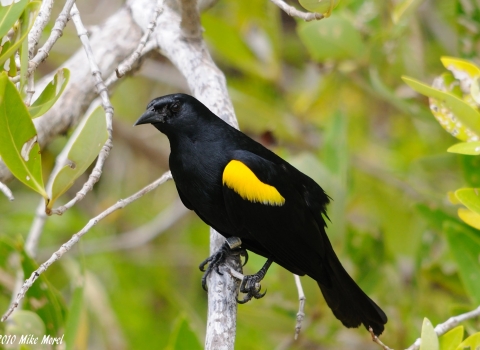The Biden-Harris administration is committed to combatting the climate crisis. In support, we created the Climate Change Action Program (CCAP) as a unified approach to climate adaptation and mitigation. It is a living framework that will evolve as we learn how to manage fish, wildlife, plants, and their habitats in a rapidly warming climate. The CCAP has seven core elements, including climate science, climate mitigation, and partnerships, that we use to ensure success.
Climate change is threatening the country’s plants and animals. The United States has over 1,600 endangered species and 12,000 species in conservation need. One of the core elements in the CCAP is therefore the integration of climate adaptation into our natural resource planning and management actions.
One of the methods we’re adopting is the Resist-Accept-Direct framework, which provides fluid decision support to manage plants and animals in rapid habitat transformation. “Resist” occurs when management actions attempt to restore the system based on historical conditions. “Accept” is when management allows change in features of the lands and waters without intervention. “Direct” is when management actions attempt to influence the changing lands and waters to conditions that support wildlife and benefit people.
In addition to responding to climate change climate change
Climate change includes both global warming driven by human-induced emissions of greenhouse gases and the resulting large-scale shifts in weather patterns. Though there have been previous periods of climatic change, since the mid-20th century humans have had an unprecedented impact on Earth's climate system and caused change on a global scale.
Learn more about climate change through natural resource management actions and regional and national partnerships, we’re working on climate mitigation with the goal to reduce our net emissions to zero by 2050. Efforts to reduce our emissions and increase carbon capture will benefit fish, wildlife, plants, and habitats. We’ll implement energy conservation measures, ensuring that facilities meet sustainable building standards and promote renewable energy. In addition, we’ll continue to identify well- suited locations and plan for a transition to electric vehicles and electric vehicle charging stations.
Although the CCAP provides internal strategic guidance, our overall success in responding to climate change depends on collaborating across the conservation community and working with partners to address climate change impacts with a focus on social and environmental justice. We’re developing a national conservation adaptation strategy with external partners designed to incorporate climate adaptation into landscape-scale plans. The national strategy will allow the conservation community to identify common goals and actions to improve climate change resilience. We’re committed to including Indigenous communities, First Nations, Tribes, territories and underserved communities as we develop shared conservation goals.
With an emphasis on working with others, the core elements of the Climate Change Action Program provide a foundation for Service-wide actions on climate adaptation and mitigation. Implementing the CCAP allows us to accelerate and expand efforts to manage the effects of climate change, and reaffirm our role in leading effective, collaborative conservation in a rapidly changing world.
HOUSTON HUNT, Science Applications (Detail), Headquarters
- This article is from the spring 2022 issue of Fish & Wildlife News, our quarterly magazine.
- More Fish and Wildlife News.
- Subscribe to our Fish and Wildlife News email list.


